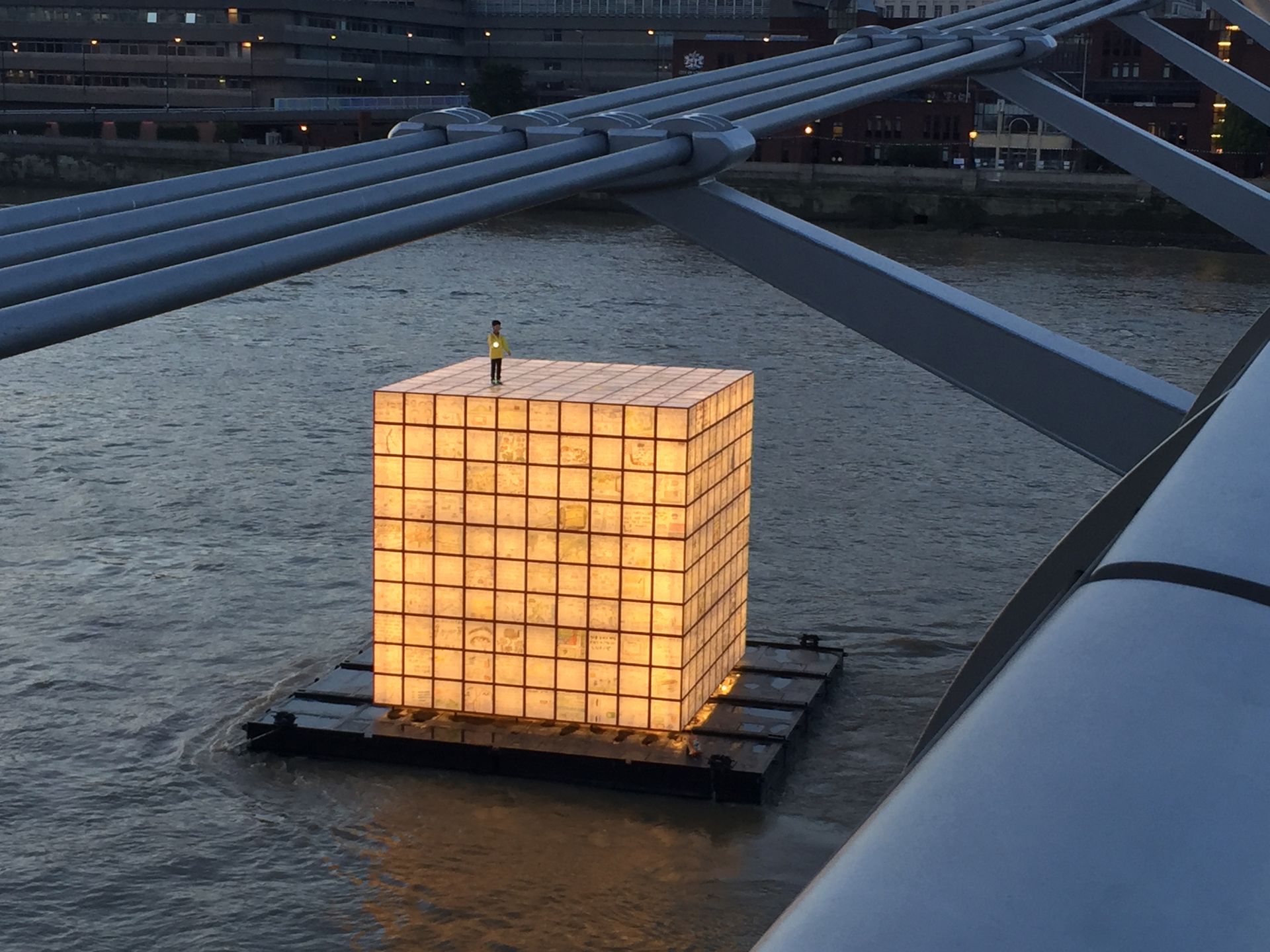Hundreds of refugees who fled North Korea more than 60 years ago have contributed to a poignant new public art piece unveiled last week near Tate Modern in London (until 30 September).
The seven-metre high installation—an illuminated, cubed structure floating on the Thames near the Millennium Bridge—is by the South Korean artist Ik-Joong Kang. A sculpture of a child holding a flashing light stands on top of the cube, which is entitled Floating Dreams.
Ik-Joong, who is based in New York, returned to South Korea and collected drawings by individuals forced to flee North Korea during the Korean War (1950-53). The refugees made palm-sized images depicting their childhood memories; these drawings were transferred on to pieces of Hanji, traditional Korean rice paper, measuring 26 x 26 inches.

Statements by some of the participating refugees are displayed near the sculpture. Hyosoup Hwang, an 80-year-old doctor, says: “I would like to return one day to the hospital that my father built in the North. I have waited for the reunification of the North and South for so long.” Ik-Joong tells us: “Every person I spoke to cried like a baby because they saw themselves as children back in North Korea. The drawings are so simple but so powerful.”
The work was commissioned by the annual Totally Thames festival, and is backed by the Ministry of Unification, the South Korean government body dedicated to “realising a new, unified Korea”. The two countries remain technically at war, since an armistice was reached to end the Korean War in 27 July 1953, but no peace treaty was signed.
The artist is, meanwhile, working on another politically sensitive piece; in November, he plans to show 15,000 drawings by refugees at the Odusan Unification Observatory in Paju located within the demilitarised zone on the North Korean border. “Art and politics are cousins, but the artist is a fisherman who throws his net,” he says.

